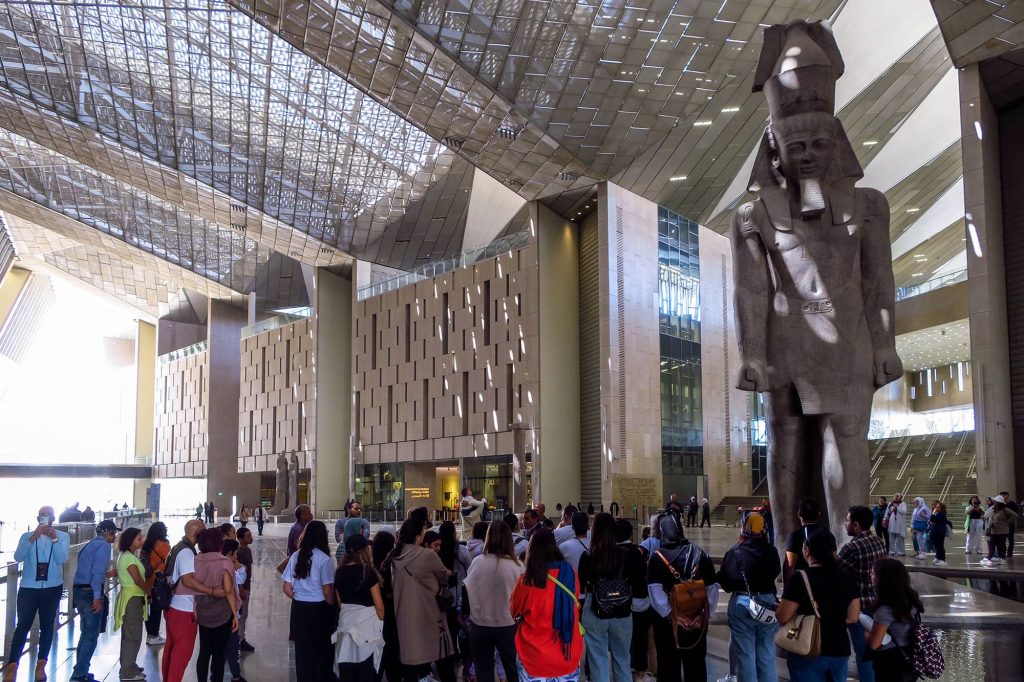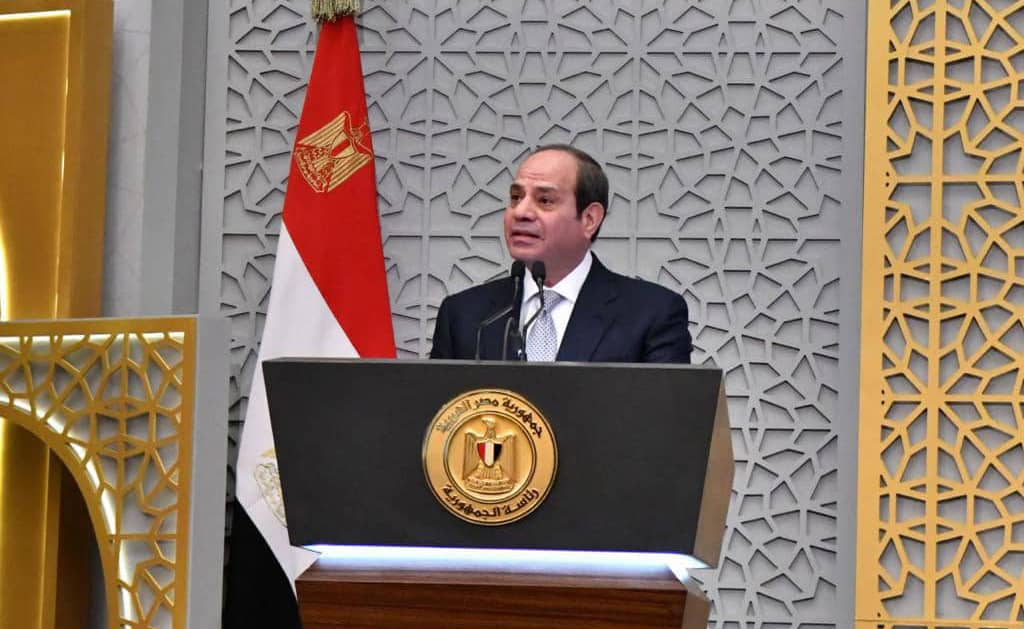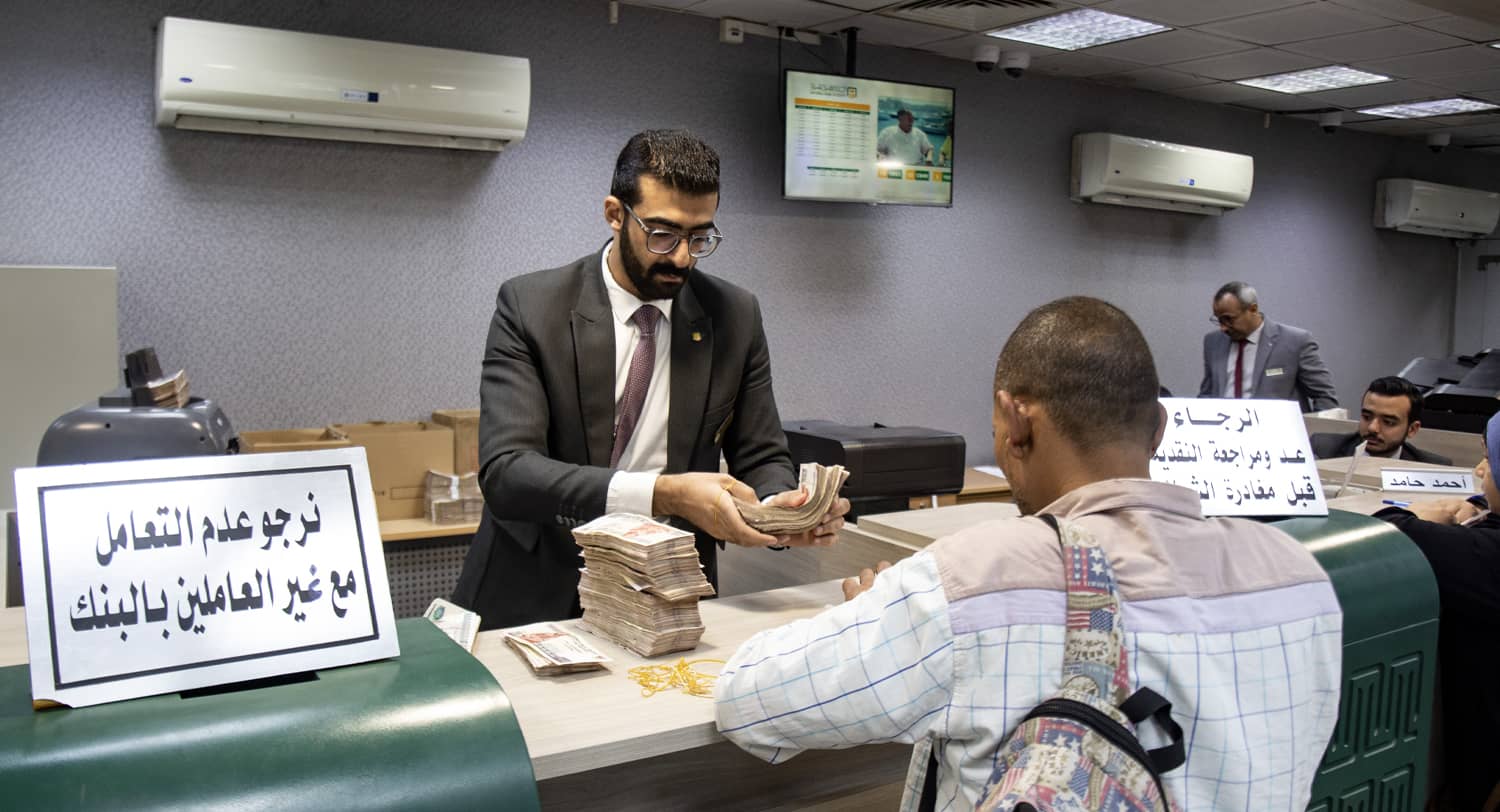Egypt’s army specializes in executing set-piece operations. In 1973, the army had the idea of using water cannons to dissolve parts of Israel’s defensive line on the Suez Canal, huge sand berms erected to prevent an Egyptian assault into Sinai. The Egyptian army did in a few short hours what Israeli planners thought would take days.
But after crossing the canal, it faced other problems. The army didn’t maneuver well, it had problems improvising, and it would not delegate authority to mid-grade officers. Today, after executing some major infrastructure projects, Egypt’s military-run economy faces serious challenges.
The Egyptian military has run the Egyptian government for nearly three-quarters of a century. It seized power when it deposed King Farouk in 1952, and except for a one-year Arab Spring interregnum, it has remained at the center of the country’s politics and economy ever since. The army’s economic role has grown significantly in the almost ten years that President Abdel Fattah al-Sisi has been in office, constituting Egypt’s single biggest challenge at present.
Under al-Sisi, Egypt embarked on major infrastructure projects that combined both ambition and haste, with military contracting and supervision as their unifying constant. The first was a $8 billion effort to widen the Suez Canal that was initiated in August 2015 and completed just a year later.
More recently, al-Sissi’s government has poured tens of billions of dollars into highways and railroads. To promote tourism, Egypt built a new National Museum of Egyptian Civilization, and a separate billion-dollar Grand Egyptian Museum to take the place of the moldering edifice in Cairo’s Tahrir Square that was built in 1901.

The largest project of all arose in the desert 45 kilometers east of Cairo. There, under military supervision, the Egyptian government built a new capital, with grand boulevards, a cluster of universities, the tallest building in Africa, and a marble-encrusted opera house. The defense ministry has pride of place: a massive building called “The Octagon” that has almost 50% more floor space than the Pentagon.
The logic of the plans was sensible. Building transportation and tourism facilities creates jobs now, and the projects would have returns for decades to come. A modern capital would boost efficiency and remove the seat of power from the pressures of the overcrowded and volatile mega-city of Cairo. An injection of cash into the economy would jump-start broader investment in the near term. And, as some close to the government put it, persuading the population that Egyptians can build first-class, modern facilities would provoke its own renaissance, prompting a new generation to think ambitiously, take pride in their heritage, and shake Egypt out of its slumber.
Arguably, this is precisely the attitude that had made Dubai a wonder of the modern world. A combination of favorable geography and bold leadership, boosted by government seed money, created vast wealth for local inhabitants. Even capturing a fraction of the perceived magic of Dubai in Egypt would be a huge achievement.
But comparing Dubai and Egypt is comparing chalk and cheese. Dubai’s entire population of 3.5 million— less than 10% of whom are Emirati citizens — fits comfortably into some neighborhoods of Cairo. All of the UAE’s full citizens constitute about 1% of Egypt’s citizenry. And Dubai’s development has been partly an outgrowth of Abu Dhabi’s financial backing, especially in moments of financial peril. It is not for nothing that the tallest building in the world, built as the Dubai Tower, renamed itself the Khalifa Tower after Sheikh Khalifa, the ruler of Abu Dhabi, helped deliver tens of billions of dollars to help Dubai bail out from the 2008 global financial crisis. It was not Abu Dhabi’s first rescue of its northern cousins, nor the last.
For years, Egypt was able to draw tens of billions of dollars in foreign capital through offering interest rates on sovereign debt that were among the highest in the world. Fixed-income investors saw Egypt as their salvation in a world of low inflation and low bond yields.
Even more money flowed in from Gulf governments that had been shaken by Egypt’s 2011 revolution and feared its contagious spread to the rest of the region. In the decade since al-Sisi took power in 2013, deposing the Muslim Brotherhood-led government, the Gulf invested upwards of $100 billion in deposits, aid, and subsidized goods into Egypt to stabilize the economy.
But first the COVID blow to tourism, and then the Ukraine war, changed everything. Interest rates spiked, inflation rose, and about $20 billion in investors’ money left Egypt in a matter of weeks. The government’s bill for subsidized commodities such as wheat, cooking oil, and gasoline shot up, just as financing was becoming harder. Egypt was suddenly vulnerable. Moreover, the Gulf states that had rushed to buck up Egypt since 2013 seem tired of bankrolling Egypt’s ambitious economic plans. They have withdrawn billions in deposits they held in the Egyptian Central Bank.
The Egyptian government, then, is in a jam. It began negotiations with the International Monetary Fund in March 2022, shortly after the Ukraine war broke out, and publicly projected a loan in the $15 billion range. Over the summer, al-Sisi pressed European donors to ease conditions on Egypt, explaining they needed to understand his political limits. His gambit failed. The IMF deal announced in December 2022 was for $3 billion, and the IMF imposed some tough requirements. Among them was a promise to adopt a “durably flexible exchange rate,” and an insistence that the army begin divesting many of its economic assets.
Unexpectedly, the Gulf states lined up behind the IMF conditions — some say they even pushed the IMF to be tough. While the Gulf was slated to invest $17 billion in Egypt as part of the IMF plan, they have not done so yet. Gulf sovereign wealth funds have explored buying into army-owned assets such as the Wataniya chain of gas stations and convenience stores, and government-owned assets such as the United Bank. Yet they have stayed out. Gulf investors worry that the Egyptian pound remains overvalued, and that the books of the companies they seek to buy remain opaque or incomplete. Investors inside and outside Egypt worry about competing in sectors where a government-owned company would be a competitor, and they worry about being mere minority owners of government-owned companies. They may also anticipate that as Egypt’s economic straits get more dire, the terms of investment will improve.

From a political perspective, Egypt does not appear to be tottering, despite 30% inflation and a 50% devaluation of the pound in the last year. The government has made clear that its tolerance for dissent is low. Many estimate that Egypt has 60,000 political prisoners, and thousands of Muslim Brotherhood sympathizers have left the country. But in addition, many Egyptians regard the country’s years of turmoil after the 2011 revolution against military rule to have been a costly mistake. There is less political freedom and little hope that any alternative could deliver meaningful change.
From al-Sisi’s perspective, however, his room for maneuver is narrowing. The population is large and under stress, and the expensive projects that he had backed to demonstrate boldness and decisiveness are slowing owing to financing challenges. His external financial support is holding out for better terms. Even more worryingly, external donors and creditors are pressing him to make a stark change, sharply reducing the military’s role in the economy.
Some observers suggest that for al-Sisi to reduce the military’s economic holdings is inconceivable. First, he believes that the military is both the most competent institution in the country and also the only genuinely patriotic one. But second, he is said to fear that the military will not tolerate his acting against their interests. If he will not accommodate the military, the fear is that the military will find a different leader who will.
As director of military intelligence, al-Sisi helped move aside Defense Minister Mohamed Tantawi as he himself became defense minister in August 2012. And as defense minister, al-Sisi helped move aside President Mohammed Morsi in July 2013 to himself become president. He is surely alert to the possibility of sedition in the senior ranks.
Yet, as someone who has been in Egyptian military institutions for a half-century, al-Sisi’s challenge is that of the Egyptian military itself: how to act with agility under changing conditions, how to lead confidently while simultaneously delegating authority, and how to bridge the gap between military leadership and civilian rule. The necessary moves won’t be comfortable, and they are not part of the old playbook. But if al-Sisi is able to make the transition successfully, the gains for Egypt will be immense.

